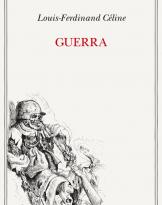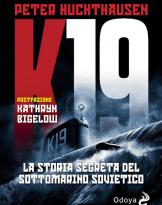Claudio Razeto
Capricorn editions
pagg.168
In October this year is the centenary of the greatest military defeat left in Italian memory, and Claudio Razeto's book tries to make a point on a controversial case. It does so in a very clear way, following the events from 1916 to 1918 and beyond, including narration with an accurate selection of vintage maps and photographs. In this the author is a specialist, given his experience as a researcher of historical-photographic archives and his work at ANSA. Nor to analyze the Great War is easy: the battles seem all the same and inconclusive; the generals who are all as obtuse as obtuse and follow the movement of the wards on the ground - we talk about millions of men - are a very boring undertaking, especially when one persists in maintaining the same positions for years. Tolstoy had little to do with the Eleven Eleven Battlefields: by now the war had become a massive industrial clash, and the description of trench life has little to do with romanticism. Epic (if not aesthetic) was certainly the mountain war - Alpine, Jaeger and Schutzen wrote memorable pages - but in the end the wars are won in the plain. In fact, the twelfth Battle of the Soon - so the Austrians call Caporetto - took the enemy to occupy Veneto, Friuli and Carnia in a few days, until the line of Piave, from which our final rescue began.
But let's start with geography. The Italian front ran for 600 km along the Alpine lap, great to defend but not to attack. In addition, the Trentino (Austrian) was in such a way as to threaten the Italian deployment extending to the east. Twice - in 1916 with the Battle of the Highlands or Strafexpedition and in 1918 with the Battle of Solstice - Italy risked invasion from the northern valleys. Let us now go east; in the 1915 the Isonzo (and not Piave, as in the song), the access roads to the Austro-Hungarian Empire were only two: the way to Vienna, that is the Tarvisio valley (where Napoleon had passed) and the via to Ljubljana, or Gorizia and the Gorge of Isonzo. Of course, Trieste was defended by the Karst, a broad, arid relief near the coast but well defensible. Strangely discarded Tarvisio (too north?), Cadorna for two and a half years will systematically attack on two points: towards the Isonzo valley and Trieste. Mandatory directives: The Isle of the River goes parallel to the eastern arch of the Alps and access to Gorizia passes through a wide gorge dug by the river between two mountains, in front of Tolmin. Gorizia Grip (1916) is the only significant achievement: the eleven Elephant battles, all fought on two shots, led to minimal land gains in the face of huge losses. Trieste was never taken and in the high valley of Isonzo - surrounded by mountains - we are already attesting to the 1916 in the salient between Caporetto and Tolmin. And it is from the physical place we have to leave: Caporetto, Kobarid for the Slovenes, is a village that occupies a large basin along the Isonzo valley on the Slovenian side, at the junction between the river and the plain of Friuli. We, wound up in the salient, could take Tolmino to the maximum and traverse the railway to Ljubljana, while the enemy, once broke through Gorizia, would see the plain of the Veneto open, forcing the entire Italian deployment back 'alpine arch. And this is exactly what the 24 October of 1917 happened.
The book opens up to us in the scenario shortly before the battle: the bloody 11th Battle of the Soon (August 1917) ended and the Austro-Hungarian army believes it can not resist another Italian offensive: at the 31 August it left on the 85.000 men's field against 144.000 our soldiers. We paid a hard price for a few miles of land, but there are still resources for another frontal attack, while enemy reserves are worn out. German general Ludendorff realizes it and decides to intervene in favor of the Austro-Hungarian army. The situation is favorable for the Germans: the Russians have been defeated and soon they will come out of the scene, so it is possible to move large units from the eastern front. The 14 Armed by Otto von Bulow, marching at night, maneuvered towards Slovenia, while Austrian general Boroevic, said "The Lion of the Soon" reinforces the defensive lines. Cadorna insists for years with frontal attacks always on the same positions and Boroevic on those resists and keeps losing losses. His purely defensive strategy is perhaps the only possible one, but he has worn his army. Both generals are fanciful, hard with themselves and with their own men; they fight a modern war with an ancient spirit. The Germans, on the other hand, are tactfully more modern and have already demonstrated on both sides, coordinating artillery and infantry and training assailants - Sturmtruppen - able to infiltrate a few points of the deployment and penetrate it deeply, thus overcoming the trench war, here in the book described through the direct testimonies of both Italian and Austro-Hungarian fighters. Right in the trenches of Caporetto reigns unrealistic calm: the Italian deployment is all forward, the twelfth battle of the Soon will be fought in the spring, but Cadorna has good information and reinforces the defenses. However, he can not know that the Germans have sent General Konrad Krafft von Delmensingen, German Alpine Commander, Alpenkorps, which also belongs to the young Lieutenant Erwin Rommel. His men have a precise order: infiltrate, overlook the peaks and break down into the valley; the next wave of infantry will think of the raggedness. To understand its meaning, I suggest a book written by then-Lieutenant Erwin Rommel, the future Fox of the Desert: Infantry to the attack (1), which we only translated into 1982. His assault department even took our positions by wrangling behind him and penetrating for miles in depth, while our Command still did not understand the real extent of the offensive. In the third chapter, the author describes exactly the Italian front on the eve of the battle: all faced to a salient, but weak and little staggered in depth. It is an abnormal deployment: typically offensive but forced into a closed enclosure that can be tightened if it is attacked by Caporetto and Tolmin. On the mountain war von Clausewitz (2) it is clear: it is not advisable to accumulate all the forces on the passageway because at the end the cap jumps; then better deploy the defense in depth. But Cadorna, while aware of the danger, does not accept to surrender the land he has gained at a fair price: already the 18 September the Supreme Command orders the commanders of 2a and 3a Armata of "to give up on offensive operations designed and to concentrate all activities in the predispositions for defense to the extreme. " But General Capello, head of the 2 ° Army, does not agree. As he then wrote,Faced with a strategic offensive in grand style, no other maneuver can give decisive results if not a corresponding strategic counteroffensive in style, or rather a ready counter-offensive that will surprise the enemy in a crisis of preparation ". Therefore he plans a counter-offensive that not only goes against the orders of Cadorna, but which will never be launched. A lot has been written about the contrasts between the two generals, but Capello is certainly more modern than his boss, and in the MS conference that holds the 23 in October he proves to be well informed about the enemy forces. Even Badoglio, commander of the 27 ° Army Corps, is confident, but the day after his guns will not shoot a single shot (3). This uncoordination was just the tip of the iceberg of a crisis of command that would have favored the disaster.
In the book, the attack started at 02.00 24 October 2017 is described as in a commentary, also citing Austro-German sources (4). Intense and precise bombardment, use of gas, followed by the 06.20 by the hard and decisive assault of the assault troops against Plezzo (Bovec) from the north and Tolmino (south), favored by the fog. This communicates our advanced position:
"The Austrians came out of the trenches, and we see them passing through the fog, passing the cross-links. We retire. "
Italian lines collapse right away and the communications system enters into chaos; the resistance moves in the course and the breakdown of the bottom valley opens to the enemy the Friulian and Venetian plains. The Italian artillery does not shoot a shot and the entire Italian squad is retreating. The soldiers cheated on the odds the enemy will think about later: the avant-gardes go ahead without worrying about the links. The same Germans and Austrians are surprised by the success. So Lieutenant Weber writes:
"Even the night did not allow the attackers to increase the successes already achieved by dizzying rhythm, to turn the breakthrough into a total disaster, the retreat of the enemy in an escape "
The October 28, when Udine had not yet fallen, was sent by General Cadorna the controversial statement, passed to history, in which he accused the soldiers of cowardice:
"The violence of the attack and the defective resistance of some 2 ° Armata departments, which were withdrawn without fighting or ignorantly forged by the enemy, allowed the Austro-Germanic forces to break our left wing on Julia's forehead. "
This judgment was unfair as unfair and was also exploited by Austro-Hungarian propaganda. Soon reminded but known to all, this statement was also the Caporetto of Cadorna, who was dismissed by the new head of government, Vittorio Emanuele Orlando. Although the enemy had applied more modern tactics, the cause of the defeat was in fact all within the Major State. Cadorna was actually no different from Haig, Joffre, Nivelle and Hamilton: all the generals of the Great War were elders, aristocrats, and despised the masses as the parliament. To blame the defeatist and socialist propaganda, however, was taken away, but no political opposition movement - including the Catholic Church - in fact had a real influence on soldiers and masses in Italy. Rather, the shortage of Italian politics - and not just Italian - was poor control over the military: today Cadorna and Badoglio would be disbanded within a month and SM structure is more articulated. As for the soldiers, they are now rather asked how they have resisted for so many years in unacceptable life conditions at the time. The answer lies in the many, significant photos Razeto chose to accompany the narration: trenches, devastated landscapes, industrial scrap, cannons, but mostly masses of men. That is where the contrast between Sturmtruppen and line infantry emerges, between the hard faces of the Schuetzen defending their home and the strange look of the Italian peasant sent on another planet. But it is just that kind of soldier - which is now unavailable - that he eventually resisted and won.
The narrative continues: after the Isonzo and Tagliamento, in the end - is the 9 November - remains the Piave line. We lost about 12.000 dead, 30.000 wounded and 265.000 prisoners, there is everywhere a climate of chaos, destruction, raids and free violence (dramatically described by Ernest Hemingway in "Goodbye to the Weapons") following the invasion of the invader throughout the Venetian plain. The retreat is now recompiled, though two cavalry divisions have been abolished to slow down the enemy's advance, which now reaches the offensive area: even the enemy infantry went on foot and the Panzerdivisionen were beyond to come. Cadorna demonstrates in defensive qualities best that offensive, while the command goes to Neapolitan Armando Diaz, more human with the soldiers. Here too, Razeto makes us practically march along with soldiers, with testimonies of both sides. At the end of the 1918 weighing needle will be on our side. Forever. But the internal counting of our army will be long: the 19 January 1918 commission will publish results in 1919 and its three volumes remain a key document (5). And in fact the last chapter in the book is intitol: Process to Caporetto.
Marco Pasquali
NOTES
-
Infantry to the attack / Erwin Rommel. Longanesi, 1982. The book came out in German in the 1937, when Rommel taught at the Potsdam Military Academy.
-
Of the war / Carl von Clausewitz; Translation by the German general of the Ambrogio Bollati and the ten. Colonel Emilio Canevari. Rome, Military Magazine, 1989. Note: The defensive mountain war speaks in the 6 ° book in the 16 and 17 chapters and the offensive book in 7 °, cap.11. Strangely, in the Italian manuals the mountain war occupied marginal space, despite the strategic importance of the Alpine arc.
-
Badoglio, Duke of Caporetto / Carlo De Biase. Rome, editions of the Borghese, 1965
-
From Monte Negro to Caporetto: the Twelve Battle of the Soon, 1915-1917 / Fritz Weber Milan: Mursia, 1972. The author was an Austrian artillery lover, and his books well complement Italian sources, also demonstrating our soldiers much more than our generals.
-
From the Ionszo to the Piave: 24 October-9 November 1917 / report of the Commission of Inquiry RD 12 January 1918, n. 35 Rome, 1919. 3 volumes: · 1: Schematic hint of the events. 2: The causes and responsibilities of the events · 3 / report of the commission of inquiry












